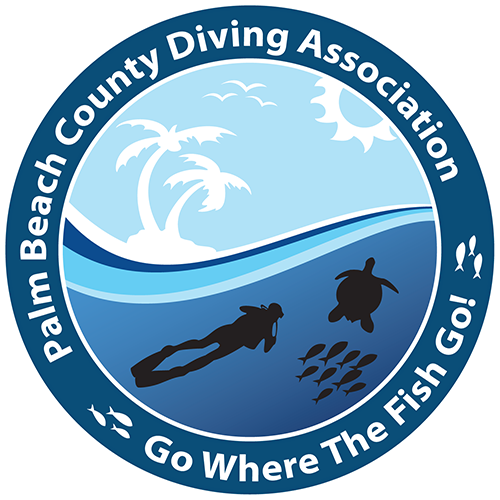Getting The Drift About Drift Diving
Dive boat drifting over dive site following divers as they go about underwater exploration.
Gulf Stream-powered drift diving is the name of the game in Palm Beach County, and it is something local dive operators know how to do well. The primary practice used is called the “Live Boat” method in which the boat, between deployment and recovery of divers, follows the divers overhead while they travel with the current exploring the reef or in most cases the wreck(s).
Here’s how it works: As the boat gets close to the intended dive site, divers are given a 10-minute warning to gear up. Once there, the captain lines up the boat a short distance up current of the intended reef tract or wreck. Once in position, the boat is put in neutral and a jumpmaster-style type command of “Dive, Dive, Dive” is issued. The dive group steps overboard and begins their descent.
At this point, they will not feel any affects of the current, because both they and the boat are moving with the flowing water. It is only as they approach the bottom, they will begin to notice that they seem to be flying over the ground, at speeds that could range from barely describable to brisk, depending on the location and the nature of the currents on that particular day.
Once settled in near the bottom, divers can relax and allow the current to do most of the work, while staying in visual range of the divemaster and/or group leader who carries a tethered surface float. This style of diving actually requires less exertion than diving on a reef or wreck with no current, and divers are able to cover long distances following the reef contours as they go, thereby increasing their odds of seeing the region’s big-ticket items.
At the end of the dive there is no need to fight the current to get back to the anchor line, or remember where the boat is. Instead, the group simply heads for the surface, performing a safety stop along the way, and the boat comes to them for re-boarding. The process is surprisingly simple, convenient, and most of all, a lot of fun!
Water Conditions
Though the Gulf Stream flows relentlessly northward as a whole, it’s flow can be less predictable along the western edge that contacts the Palm Beach County coastline. The speed of the flow can range from 3 knots down to a barely describable trickle, and on some occasions, counter-flow eddies may even create a reverse current.
In the Jupiter area, such shifts in the current’s direction are sometimes triggered by deep-water upwellings. To both divers and marine life, the upwelling events can deliver a little bit of a shock with bottom water temperatures dropping several degrees cooler than surface temps. This can be a rude awakening when with surface temps in the low 80’s transition to bottom temperatures in the 70’s.
Water temps typically average between 79 and 82 degrees in the summer, with cooler temps in the low 70’s during the months of December through March.
Both sea state and underwater conditions can fluctuate widely due to changes in weather conditions as well. Strong winds delivered by northerly fronts, heavy rain and the passing of a tropical storm are fully capable of dropping underwater visibility to a dismal 10 to 20 feet on occasion.
But just as quick as Mother Nature takes it away, she can give back, rebounding as quick as a day in a return to the stellar conditions the Palm Beach coast is famous for.



